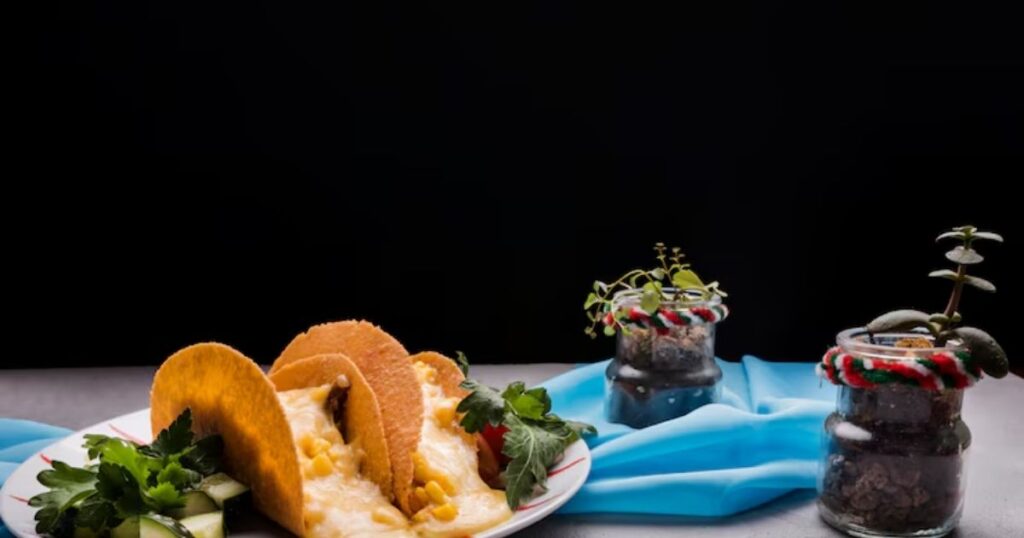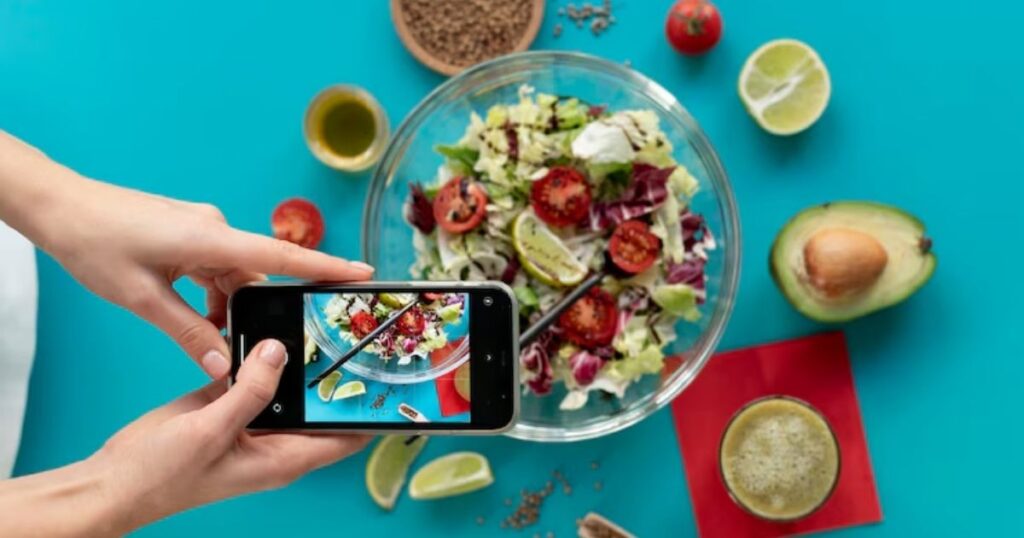Top 12+ Current Food Trends 2025: Revolutionizing Restaurants This Year
That over 70% of consumers are now actively seeking plant-based options in their diets? As the culinary landscape evolves, current food trends are shaping not only what we eat but also how we think about nutrition and sustainability.
This article will delve into the latest shifts in the current food trends industry, from innovative ingredients to sustainable practices, and explain why these current food trends matter for your health and the planet. By the end, you’ll be equipped with insights to make informed choices at your next meal.
1. Authentic cuisine: back to the simple

In an age of culinary experimentation and fusion, there’s a growing movement that celebrates the beauty of authentic cuisine, drawing diners back to the simple joys of traditional establishments.
Picture yourself nestled in a classic bistro or a cozy brasserie, where the air is filled with the comforting aromas of roasted chicken and aligot, a creamy potato dish that could easily evoke memories of grandma’s kitchen.
These beloved dishes, like mashed sausage or rice pudding, are not just meals; they are emblematic of shared tables and friendly atmospheres that foster connection over generous portions.
Restaurants like Brasserie Lazare and Ambassade d’Auvergne exemplify this return to roots, serving flagship recipes that have stood the test of time. Here, canned sardines may grace the menu alongside hearty bouillons, each plate telling a story steeped in nostalgia.
The personal touch of a chef who respects their craft transforms simple cuisine into a celebration of heritage, allowing diners to experience the flavors of their childhood memories. In these spaces, current food trends becomes a communal ritual, where every bite carries the warmth of tradition and the essence of authenticity.
2. Looking for well-being: towards a healthier 2025 food trend

As we approach 2025, the food landscape is shifting dramatically, driven by a collective health concern and a desire for well-being. Consumers are moving away from overconsumption of processed products and seeking quality over quantity.
This balanced current food trends emphasizes the importance of knowing product origins and embracing natural cuisine. Homemade meals, rich in flavor and nutrition, are making a comeback, as people turn to their kitchens to create healthier options that reflect their values.
The resurgence of forgotten vegetables, alongside the rise of fermented products like kefir and pickles, illustrates a growing interest in gut health and probiotics. Edible flowers and ingredients such as hibiscus and flavored butter are becoming staples in both home cooking and restaurant menus, adding layers of flavor while enhancing nutritional profiles.
Additionally, adaptogenic current food trends and mushrooms are gaining traction, celebrated not just for their taste but also for their potential health benefits. This evolution in our culinary landscape invites us to explore innovative dishes like kebab bowls that marry tradition with modern wellness practices, fostering a deeper connection to the food we consume.
3. Respect for the environment: an eco-responsible attitude

Adopting an eco-responsible attitude goes beyond mere environmental awareness; it embodies a lifestyle shift that champions planet preservation through mindful eating habits. By embracing plant-based alternatives and promoting meat reduction, individuals can significantly lower their carbon footprints while also supporting local producers through initiatives like Faubourg Daimant and Anona.
These establishments not only highlight seasonal products but also encourage a reduced menu approach, focusing on full ingredient use to minimize waste. When consumers choose vegetarian or vegan options, they contribute to a larger movement towards responsible consumption and ecological transition.
Moreover, the rise of visible anti-waste practices, such as upcycling and the utilization of functional vegetation, showcases how creativity can thrive in sustainability. Digital tickets and online communication platforms further enhance transparency around product sourcing,
allowing consumers to engage directly with producers committed to eco-friendly practices. This connection fosters a community that values not just what is consumed, but how it impacts the environment.
By choosing businesses certified by Ecotable, patrons actively participate in anti-waste actions and support a healthier planet, demonstrating that each meal can be a step toward a more sustainable future.
4. Foreign cuisines: food trend for new flavors

As we step into 2025, the fusion of foreign cuisines is becoming an exciting canvas for culinary innovation, blending traditional flavors with modern techniques. Italian cuisine is evolving, showcasing giant ravioli stuffed with unexpected ingredients like kimchi or Korean Tteok-Bokki, creating a delightful contrast that surprises the palate.
Meanwhile, English cuisine is embracing its own renaissance, with classics like sausage rolls and hash browns being reimagined in gourmet formats, while English cheeses pair beautifully with artisanal pizzas that incorporate renewed pizza dough for a unique twist.
Across the Atlantic, America’s food scene is a melting pot of global influences. The rise of Japanese hand rolls offers a fresh take on sushi, inviting diners to engage with their food in a hands-on way.
Dish innovators are also breathing life into nostalgic favorites; think chicken waffles served with a side of spicy Polish pierogies or decadent donuts inspired by Krispy Kreme’s signature sweetness.
This current food trends isn’t just about culinary borders; it’s about celebrating cultural intersections, as seen in pop-up restaurants like El Cartel del Taco and Disco Burger that redefine comfort food through collaborative recipes.
As we savor these diverse offerings, we’re not just tasting food—we’re experiencing a world enriched by flavors, history, and creativity.
5. Influence of social networks: the shared experience

The rise of social networks like Instagram and TikTok has transformed how we experience food culture, creating a shared narrative that transcends geographical boundaries. With each viral current food trends, from Instagrammable dishes featuring vibrant purple floral desserts to the savory allure of shawarma wrapped in pita, platforms become a canvas for culinary creativity.
Data Essentials predicts that by 2025, ingredients such as avocados, sweet potatoes, and spicy ranch will dominate menus, driven largely by influencer collaborations that amplify these trends across digital landscapes.
As users scroll through their feeds, they not only consume content but also participate in a global culinary craze that encourages experimentation and exploration. The popularity of dishes like cresto de gallo pasta—infused with chili and paired with refreshing shaved ice drizzled with condensed milk—highlights how current food trends is becoming an art form shared among communities online.
Mexican beers and yogurt-based sauces are no longer just local favorites; they’re being celebrated worldwide, showcasing how social sharing fosters a rich tapestry of flavors and cultures that resonate with diverse audiences. Each post, hashtag, and share weaves into the collective experience, redefining not just what we eat, but how we connect through food.
6. Democratised alcohol-free: the emergence of new options

The rise of alcohol-free alternatives is reshaping the beverage landscape, driven by a growing demand for options that align with wellness and mindful consumption. As consumers prioritize their well-being, innovative brands are stepping up to create original beverages that go beyond traditional soft drinks.
From artisanal mocktails to sophisticated non-alcoholic wines, these offerings not only cater to those avoiding alcohol but also enhance social experiences. The emergence of kombucha and other fermented drinks adds a probiotic twist, making them popular choices for those seeking both flavor and health benefits.
Moreover, the art of food and drink pairing is evolving with these new non-alcoholic options, inviting enthusiasts to explore exciting combinations that elevate dining experiences. Imagine a beautifully crafted mocktail paired seamlessly with a gourmet dish, or a non-alcoholic wine complementing a delicate seafood platter.
This shift not only boosts customer satisfaction but also broadens the horizons for culinary creativity. As we embrace a more inclusive drinking culture, the emergence of these democratised alcohol-free options invites everyone to partake in the joy of shared moments without compromising on taste or experience.
7. More accessible gastronomy: a food trend that is changing
The landscape of gastronomy is experiencing a seismic shift as more restaurants pivot towards accessible dining options in response to inflation and changing consumer habits. With restaurant visits becoming a luxury for many due to price increases expected in 2024,
culinary establishments are rethinking their strategies to attract a wider audience. Chefs and restaurateurs are embracing menu redesigns that feature affordable quality—think enticing $20-$22 menus that promise both flavor and value.
This trend not only caters to the economically conscious diner but also opens up opportunities for gastronomic chefs to showcase their talents in innovative ways.
As we move into 2025, the previous trend of exclusive dining is reversing, with eateries recognizing the importance of creating interesting offers that resonate with a diverse customer base.
Accessible tables are becoming the norm, inviting patrons who might have felt alienated by high price points back into the fold. By prioritizing rational spending and affordability without sacrificing creativity, restaurants can foster a loyal following.
This evolution signifies a broader cultural shift towards inclusive gastronomy, where delicious meals are no longer reserved for special occasions but are an everyday experience, making fine dining more approachable for everyone.
8. Experience beyond the plate: make way for the immersive

In 2025, the culinary landscape is set to transform as immersive restaurants redefine the complete experience of dining. Imagine stepping into a venue where the decor and design are not mere backdrops but integral elements that engage all the senses.
The festive atmosphere is carefully curated to surprise guests, blending original performances with the artistry of chefs in action, making every meal a show rather than just a meal. Ephemera Group has been at the forefront of this trend, crafting spaces where the kitchen location becomes part of the performance, allowing diners to witness culinary magic firsthand.
As restaurant marketing evolves, the emphasis will be on creating an ambiance that captivates and immerses patrons in a narrative that transcends traditional dining. Paris openings are already hinting at this shift, where each dish tells a story and every corner of the establishment invites exploration.
The goal is not just to satisfy hunger but to current food trends forge lasting memories through an interactive experience that connects guests to the heart of the culinary arts. In this new era, dining becomes a multi-dimensional journey, merging food, art, and storytelling into an unforgettable adventure.
9. Pop-ups and residences: drivers of attractiveness
Pop-ups and chef residencies are revolutionizing the dining landscape, drawing current food trends enthusiasts with their promise of unique menus and fleeting culinary experiences. These ephemeral events not only showcase guest chefs’ talents but also foster a vibrant chef community that thrives on collaboration and innovation.
By inviting renowned culinary artists to take the helm for a limited time, restaurants can create an ever-evolving atmosphere that keeps diners returning, eager to discover what’s next. This dynamic approach not only enhances menu innovation but also transforms traditional dining into an entertainment spectacle that captivates the senses.
Moreover, the strategic communication surrounding these pop-ups is crucial for their success. Engaging storytelling around each temporary event can build anticipation and excitement, turning a simple meal into a memorable occasion.
As restaurants leverage social media and other platforms to share behind-the-scenes glimpses and chef interviews, they deepen connections with patrons, creating a loyal following. This blend of artistry and strategy not only elevates the restaurant’s attraction but also enriches the local current food trends scene, making every visit a unique culinary adventure.
10. Current Food Trends: AI in daily management

In the fast-paced world of restaurant management, current food trends artificial intelligence is emerging as an essential tool that reshapes daily operations. By 2025, AI applications are set to revolutionize how establishments handle reservations and inventory management, streamlining processes that once consumed valuable time and resources.
Imagine a system that not only manages bookings but also analyzes dining trends to optimize table assignments in real-time, ensuring maximum efficiency and customer satisfaction.
Moreover, AI’s capacity for online communication allows restaurants to engage with patrons like never before. Personalized offers generated through sophisticated algorithms can enhance the dining experience, making each guest feel valued and understood.
As technological advancements continue to unfold, the integration of AI will not only improve operational efficiency but also foster a deeper connection between restaurants and their customers, paving the way for innovative service models that prioritize personalization and responsiveness.
This evolution is not just a trend; it’s a glimpse into the future of hospitality where AI transforms every aspect of restaurant management.
Also Read: Emerging Food Brands to Watch in 2025
Conclusion
The current food trends reflect a growing awareness and appreciation for sustainability, health, and global flavors. As consumers become more conscious of their dietary choices, they are gravitating towards plant-based options, local sourcing, and innovative culinary experiences.
In current food trends the rise of technology in food preparation and delivery is also transforming how we approach meals, making them more accessible and convenient. Additionally, the fusion of diverse cuisines is encouraging adventurous palates to explore new tastes and ingredients.
Embracing these trends not only enriches our dining experiences but also contributes to a healthier planet—so let’s continue to seek out and support these evolving culinary practices.







